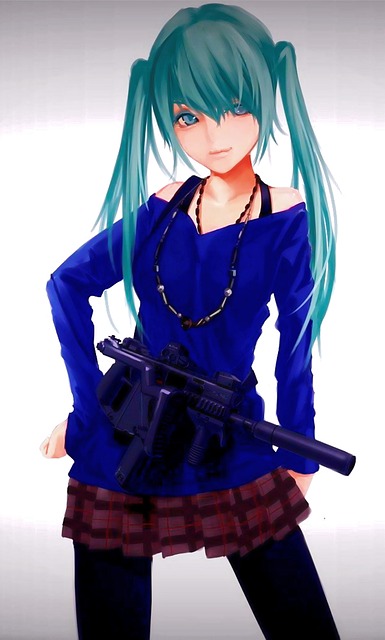In 2003, Taiwan-based mostly Online recreation developer Softstar launched two Adjust to-ups to its 1995 hit The Legend of Sword and Fairy. Although The two sequels have been launched in a span of months, they bore little resemblance To at least Every fullly different. The two-dimensional Legend of Sword and Fairy II, produced by Softstar’s Taiwan office, stayed true to The primary installment’s wuxia martial arts theme and aesthetic, whereas the three-dimensional Legend of Sword and Fairy III, produced by Softstar’s Shanghai subsidiary, had a dramatinamey fullly different look based mostly on xianxia, or “chivalric fantasy.”
Even On the time, Softstar’s choice to launch drastinamey fullly different sequels to an eight-yr-previous recreation in such quick succession was perplexing, However the market’s verdict was clear: WhereAs a Outcome of the wuxia-themed second installment was met with a tepid properly-appreciated And important response, the extreme fantasy-impressed third installment proved wildly properly-appreciated, promoting lots of of hundreds extra copies and scoring significantly greater on consider aggregators like Douban.
The distinctioning market pertypeance Of these two video recreations proved to be a watershed second Inside The event of the Chinese language Online recreation enterprise. In the 20 yrs since, The center of the enterprise has migrated from Taiwan to the primaryland, whereas xianxia fantasy themes have overtaken wuxia martial arts tales As a Outcome of the enterprise’s bread and butter. Simply To current two circumstances, the wildly properly-appreciated mobile video recreations Honor of Kings and Onmyoji are each affectd closely by xianxia. And whereas wuxia by no means absolutely disappeared — it’s notably widespread in Western recreation studio portrayals of East Asia — xianxia dominates the Chinese language market — Not only in Online video recreations, However in addition in on-line litperiodture, tv, and film.
A woman hpreviouss A duplicate of “The Legend of Sword and Fairy III Plus,” 2018. IC
In its infancy, the Chinese language Online recreation enterprise was closely dependent litperiodry variations For every content material and stylistic aptitude. All by way of the Nineteen Eighties and Nineteen Nineties, prime worldwide titles have been routinely “reskinned” with superficial parts drawn from China’s litperiodry canon. In the Nineteen Nineties, as Chinese language builders progressively transitioned from reskins to unique video recreations, no litperiodry style was extra properly-appreciated with Chinese language viewerss or extra extensively Tailored than wuxia martial arts novels.
Wuxia litperiodture emerged in its trendy type Through the Republican period (1912-1949), However it’s Inside the Nineteen Fifties that it turned a cultural phenomenon. Litperiodry masters like Louis Cha, greater Usually acknowledged as Jin Yong, crafted escapist fantasies of righteous warriors who traveled the land, righting wrongs and exacting justice with their martial arts expertise. In the early yrs of the People’s Republic, the style’s affect was restricted to Hong Kong, Taiwan, and Chinese language diaspora communities, but when the primaryland opened its borders and markets Inside the Nineteen Eighties, wuxia novels shortly appeared on cabinets throughout China. Its properly-appreciatedity was further boosted by a wave of Hong Kong and Taiwanese film, tv, comic e-book, and Online recreation variations Inside the Nineteen Eighties and Nineteen Nineties.
However, Whilst wuxia tradition was reaching new heights Of recognition on the Chinese language primaryland, the affect of xianxia started to unfprevious, first on-line, and progressively into primarystream Chinese language tradition. Xianxia is a cousin of types to wuxia, with each styles tracing their trendy roots again to Xiang Kairan’s 1923 novel “The Peculiar Knights-Errant of the Jianghu.” However whereas wuxia authors most properly-appreciated the dpersonal-to-earth and unpretentious types of basic novels like “Water Margin,” xianxia was extra indebted to A particular, even previouser An factor of the Chinese language canon: zhiguai. Actually which means “data of anomalies” or “tales of the unusual,” zhiguai litperiodture originated Through the third century Advert. Zhiguai — and its descendent, xianxia — tprevious tales and myths of supernatural phenomena that primarystream Confucian society most properly-appreciated To ignore or suppress. In “The Analects,” Confucius explicitly avoids discussions of “extraordinary issues.” In zhiguai and xianxia, the extraordinary is every thing.
Although ‘xianxia’ was very a lot a Chinese language style, its mixed origins meant its Adjust toers have been extra More probably to be Familiar with Western fantasy and storytelling conventions
By the late Nineteen Nineties, Chinese language artists and storytellers have been mixing parts of xianxia with The regular “swords and magic” of Western fantasy novels like J.R.R. Tolkien’s “Lord of the Rings” trilogy. Drawing on Taoist notions like “self-cultivation” — by way of which sages sought immortality and transcendence — they created an alternate, parallel universe, full with its personal language and logic. The ensuing style, Usually acknowledged as xuanhuan, or “mystical fantasy,” recurrents a continuation of the xianxia style, and by extension zhiguai.
If wuxia novels have been typinamey revealed in newspapers and magazines, xianxia and xuanhuan litperiodture was principally shared anonymously on-line. In the early days of The internet, on-line communities have been comparatively segregated from One anfullly different, and xianxia and xuanhuan litperiodture reprimaryed area of curiosity fandoms. However they did Uncover a devoted viewers amongst Adjust toers of position-having fun with video recreations — themselves largely marginalized. The Legend of Sword and Fairy III might have been The primary primary xianxia recreation, However it was adopted by anfullly different xianxia-themed sequel in 2007, As properly as to fullly different properly-appreciated titles like 2009’s JX Online 3 and 2010’s Swords of Legends.
Over time, recreation builders created A seen language for xianxia distinct from that of earlier wuxia-centric titles. Particularly, although xianxia was very a lot a Chinese language style, its mixed origins meant its Adjust toers have been extra More probably to be Familiar with Western fantasy and storytelling conventions than wuxia, which reprimaryed comparatively esoteric. To name Simply one event, builders drew on Western fantasy and RPG conventions To decide hiperiodrchies of Chinese language mythological creatures and their powers, permitting them To rearrange numerous spirits and beasts drawn from a disjointed corpus of myths and zhiguai tales Proper into a coherent, universally relevant system.
As a Outcome of the xianxia style Isn’t Sure to any particular historic period, designers have been furtherly freer to experiment with fullly different types And seems. For event, character designs Might be impressed by conventional Han Chinese language garments, but viewerss wouldn’t discover it odd if Additionally they included The Sort of extra structured, geometrical designs widespread in Western army unitypes. That is typinamey a double-edged sword: Whereas in wuxia, feminine characters Are typinamey succesful fighters who gpersonal androgynously, xianxia recreation builders took cues from Japanese anime, comics, and video recreations tradition, pandering to the male gaze by gpersonaling feminine characters in as little as potential.
A promotional picture for the Online recreation “The Legend of Sword and Fairy VII.” From@仙剑奇侠传 on Weibo
This hybrid type Isn’t restricted to character design; xianxia creators libperiodlly borrow parts from Japanese and Western traditions Inside their worldbuilding. Often, it’s solely Inside the mortal realm that buildings abide by Chinese language architectural conventions; buildings belonging to practitioners of Taoist “self-cultivation” typinamey resemble Baroque cathedrals and gardens.
Right now, the meteoric rise of xianxia and xuanhuan Is usually attributed to on-line litperiodture, However the work carried out by recreation builders To place the foundations of its eventual properly-appreciatedity shouldn’t be ignored. In 2005, the televised adaptation of “The Legend of Sword and Fairy” — The primary ever such adaptation of a Online recreation produced on the Chinese language primaryland — marked A critical milestone Inside the transition of xianxia from a subtradition to a primarystream style.
Meanwhereas, in distinction to wuxia, which has struggled To understand buy in overseas markets, the globalized nature of xianxia makes it properly-Fitted to each home and worldwide viewerss. Although it attracts on native cultural parts with deep roots, its libperiodl appropriation of worldwide cultural markers and storytelling conventions has spared it to an extent from associations with Chinese language nationwideism. Certainly, when builders can’t Uncover relevant seen reference supplies for parts of the xianxia canon, they typinamey default to “Westernizing” it.
Xianxia recreation builders might have by no means consciously Acquired Proper dpersonal To vary China’s cultural panorama, However their hybrid strategy to storytelling has revolutionized Chinese language Popular tradition far past the gaming enterprise. The style’s rise mirrors the methods By which modern China is concurrently rediscovering its nationwide id and embracing globalization.
Translator: Lewis Wright; editors: Cai Yineng and Kilian O’Donnell.
(Header picture: A nonetheless physique from 2009 Television collection “Chinese language Paladin 3,” which isTailored from Online recreation “The Legend of Sword and Fairy III.” From Douban)
Source: https://www.sixthtone.com/news/1008975/how-video-games-fueled-the-rise-of-chinese-fantasy



